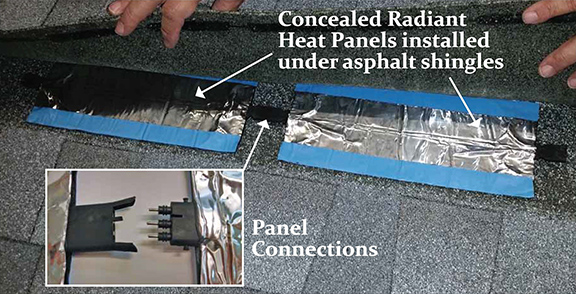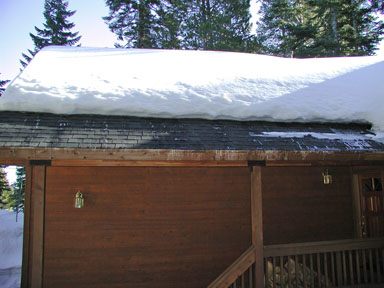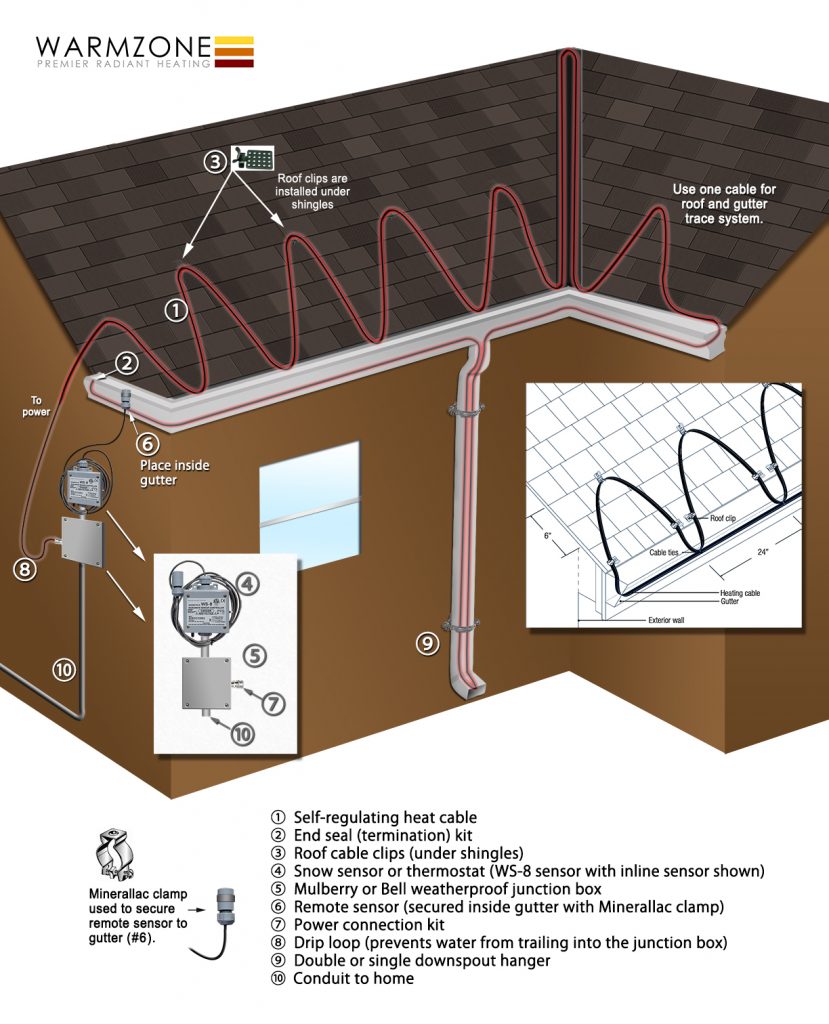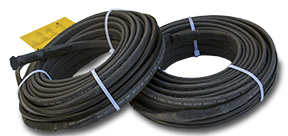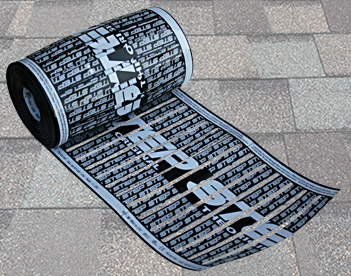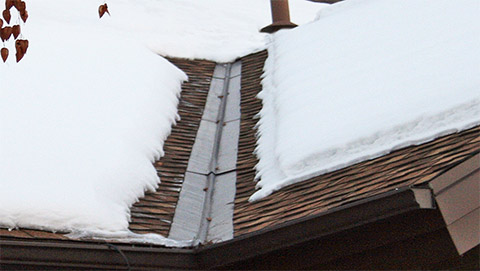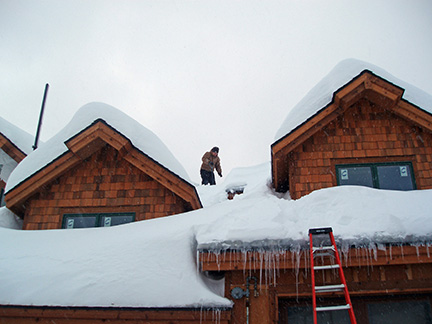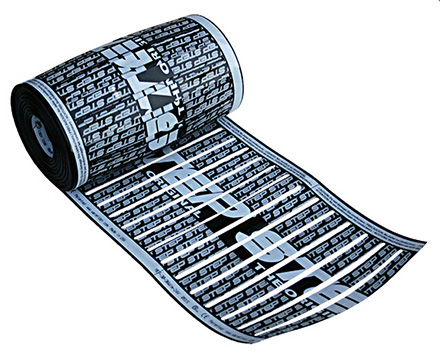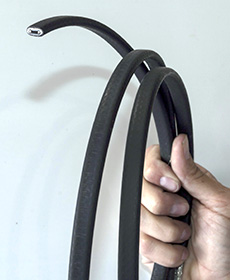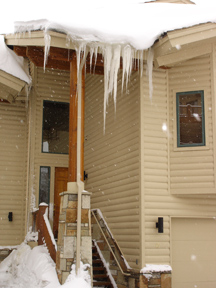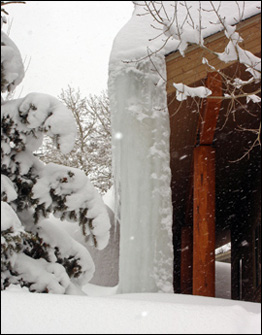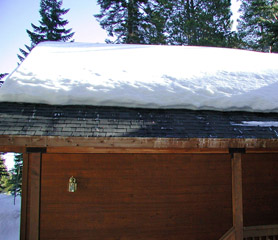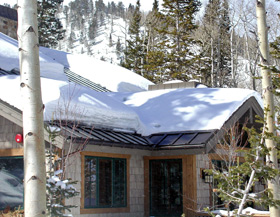Prepare for Winter by Protecting your Home with a Trusted Roof De-icing System
Another winter has kicked down autumn’s door, blasting its way across the Pacific Northwest in the form of a rare bomb cyclone. As if hurricane force winds weren’t enough, the “cyclone” was coupled with an “atmospheric river event”, resulting in mass flooding, downed trees, and power outages that affected more than 500,000 customers. But this wasn’t the only storm during the week of November 18.
In addition to the rare weather event impacting the West Coast, a series of storms simultaneously affected other large swaths of the country as well. Violent weather erupted across the northern Plains, dumping snow and spawning tornadoes, while an upper-level, low-pressure system above the Great Lakes resulted in cool temperatures and cold rain throughout the Ohio Valley and points east. A massive three-day storm also dumped up to 2 feet of snow across the higher elevations of West Virginia, Maryland, Pennsylvania, New York, and northern New Jersey. You might say that the face of this year’s winter could be compared to that of Jack Nicholson’s character in ‘The Shining’ as he’s breaking down the bathroom door. “Here’s Johnny!”
We all prepare for “Johnny winter” in our own ways, but one smart recommendation is to make sure that our roofs are prepared for the onslaught. While many home and business owners install ice guards to protect pedestrians from sheets of falling ice, some take “protection” to a higher level by installing radiant heat to protect their roofs as well as pedestrians.
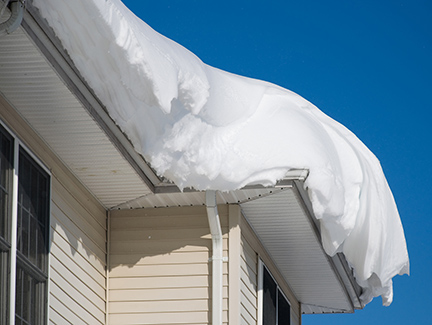
Roof de-icing systems not only can enhance safety for pedestrians, but the systems can also enhance a roof’s lifespan and prevent expensive water damage to homes. Water damage is typically the result of ice dams, the most common, and far-reaching cause of roof problems. So, the number one goal for homeowners is to prevent ice dams from forming.
Ice dams are often the result of poorly insulated attics. Warmth escapes from the home into the attic where it rises and warms the roof. The underlying layer of snow on the roof begins to melt, and trickles down toward the gutters. However, before reaching the gutter, the runoff hits the colder roof eave. In the evening when temperatures drop, the water freezes again, also because the overhanging roof has not been heated by the warm air in the attic. Over time a ridge of ice develops as more and more runoff reaches the eave. Eventually, that ridge grows, and before long it is large enough that runoff begins to pool behind it. This spells trouble for the roof.
The arch nemesis of a roof is pooled water. Trapped behind the ridge of ice, the water can seep into every tiny crack and crevice. As temperatures drop in the evening, the water refreezes, where it expands, threatening the integrity of the roof. Overtime, the tiny cracks can damage shingles, and turn into large cracks that allow water to seep into the attic and eventually down interior walls. This can even lead to the development of mold and mildew in the home, which often require costly repairs – not to mention the stress and frustration affecting the homeowners. This is why it is recommended to inspect your roof every fall, and always check for any signs of ice dams during the winter.
Common solutions to prevent ice dams from forming range from self-regulating heat cable to low-voltage heating panels, which can be installed discreetly under roof shingles (and even metal roofs).
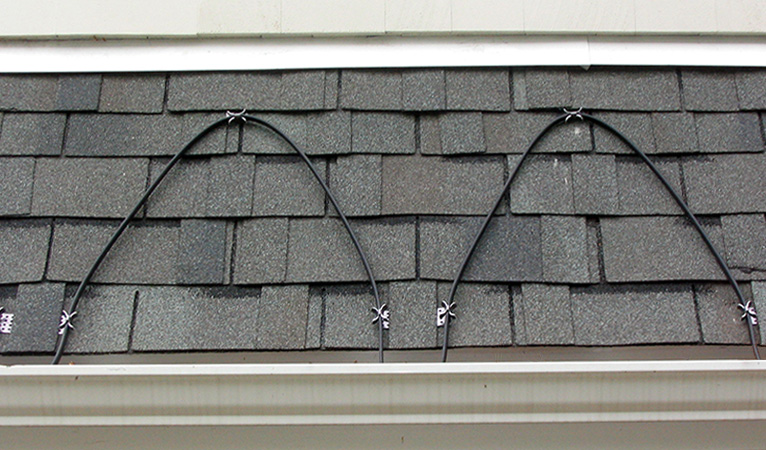
Self-regulating heat cable is zigzagged along the roof eave so that it provides channels for the runoff to reach the gutter. To keep entire roof eaves and valleys free from snow and ice, homeowners turn to the low-voltage RoofHeat STEP® de-icing system. This discreet roof heating system features thin, flexible, polypropylene-fused polymer heating panels that are easy to install. Each section of the de-icing system is controlled by an individual power unit that steps down from high voltage to low voltage (60 V or less).
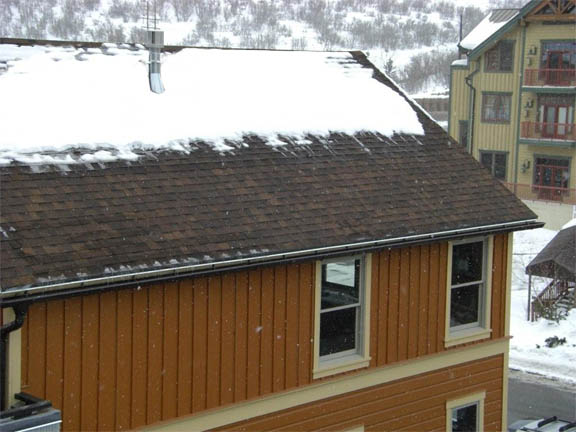
RoofHeat STEP is available in 3-, 6-, 9-, or 12-inch-wide rolls, making it easy to customize and install in any problem areas. The heating element is also self-regulating, so it efficiently increases the heat output as the outside temperature falls, and decreases the heat output as the temperature rises.
Warmzone also carries attractive aluminum heating panels that can be installed along the roof edges and eaves. Self-regulating heat cable is routed through channels in the panels, which serve as an ideal conductor, spreading heat evenly throughout the area to eliminate any snow or ice accumulation.
A variety of custom roof de-icing options are available through Warmzone. Call a roof heating expert today to learn more about the solutions that are available, at 888-488-9276.
Warmzone is one of the largest providers of radiant heat solutions, ranging from floor heating and snow melting to roof de-icing systems. Warmzone also carries a wide variety of luxury home heating amenities. For more information about Warmzone radiant heat systems or luxury amenities, contact a friendly Warmzone representative today, at 888-488-9276.

